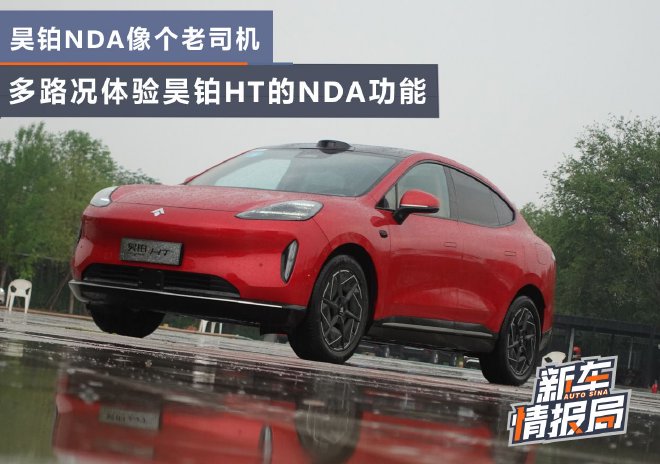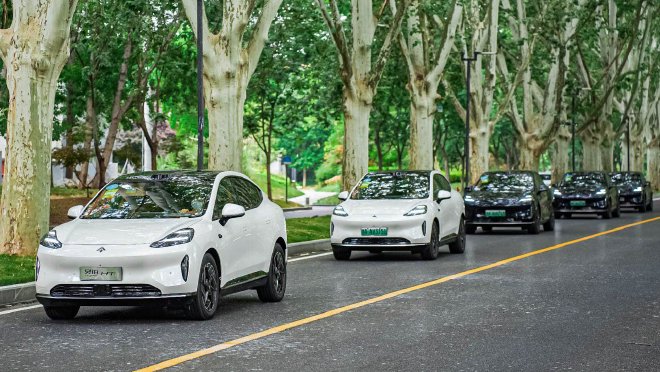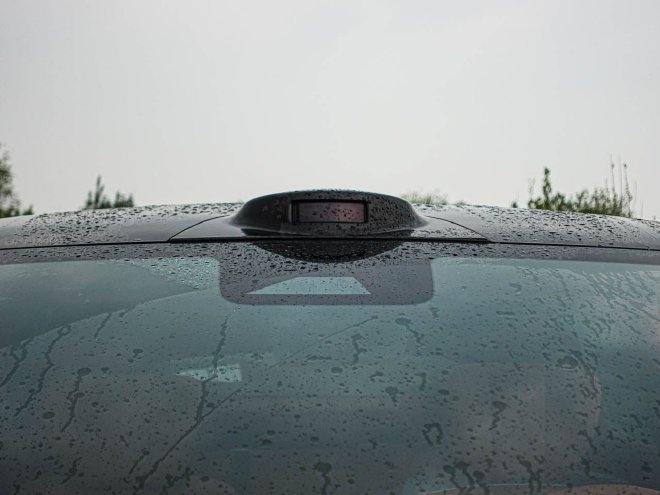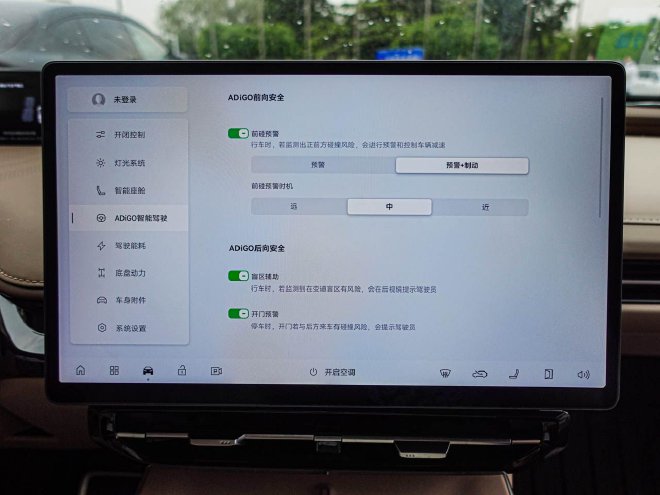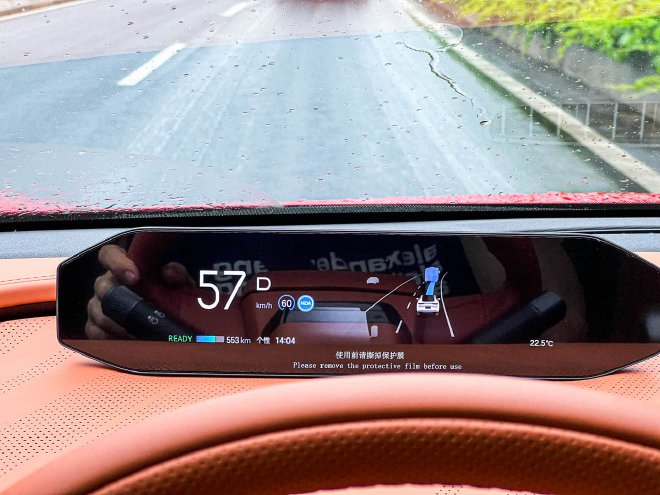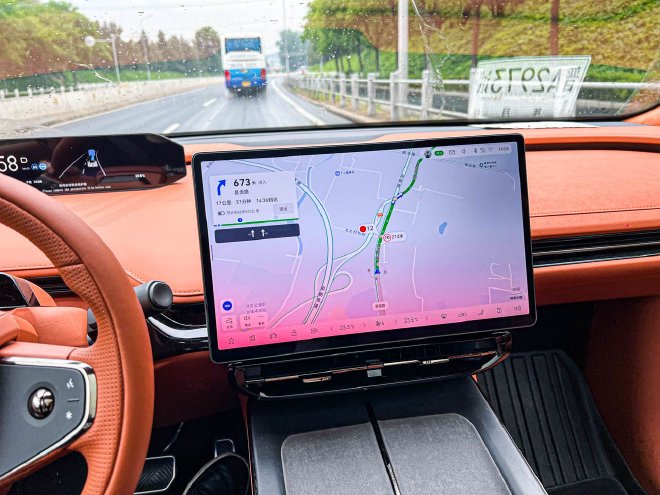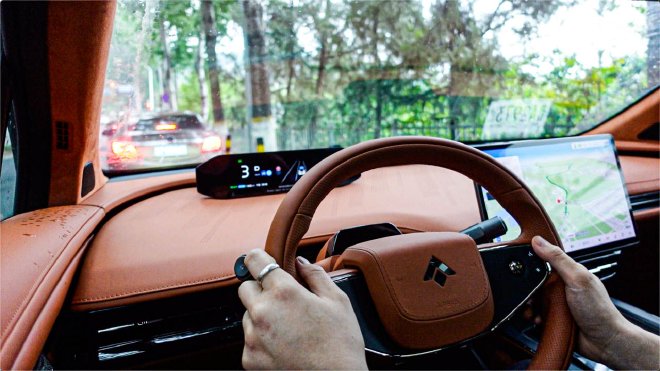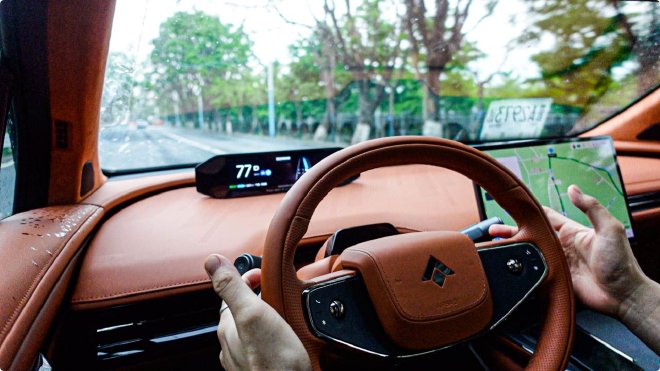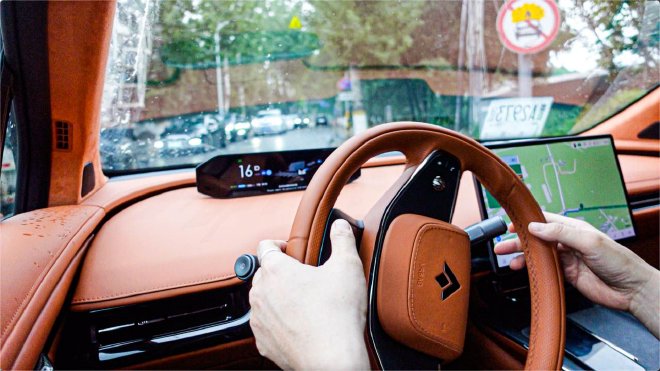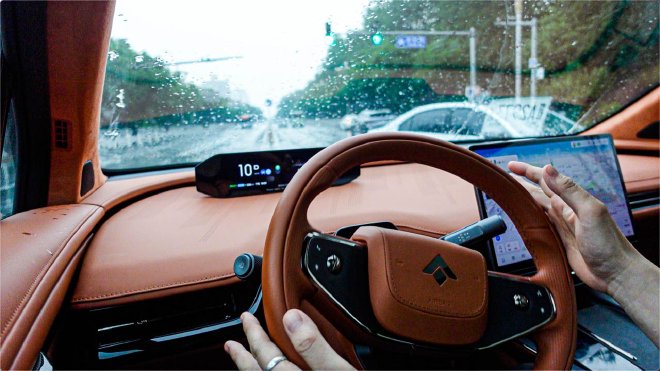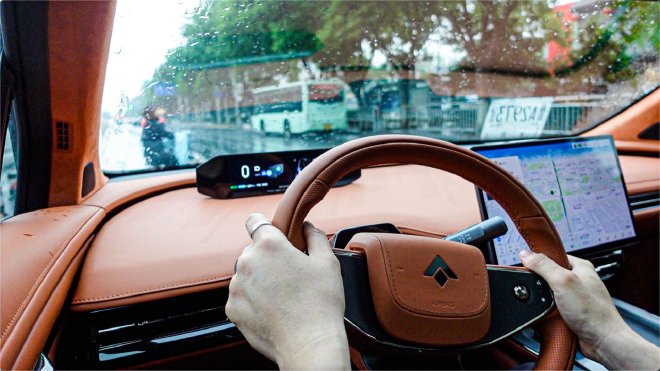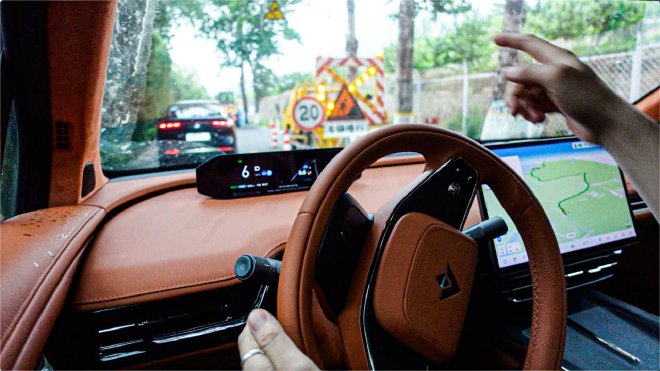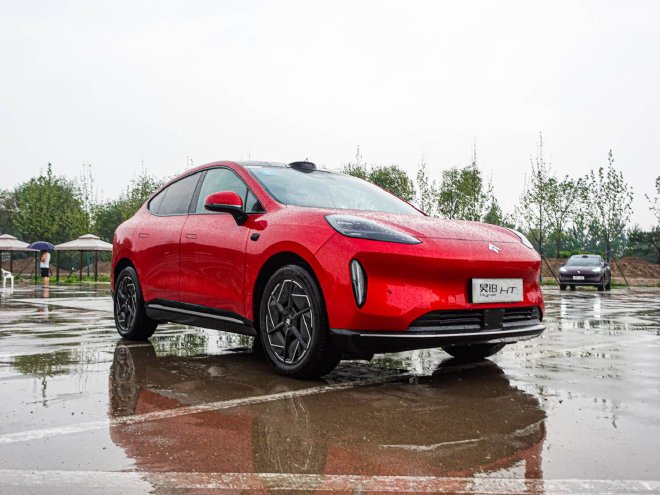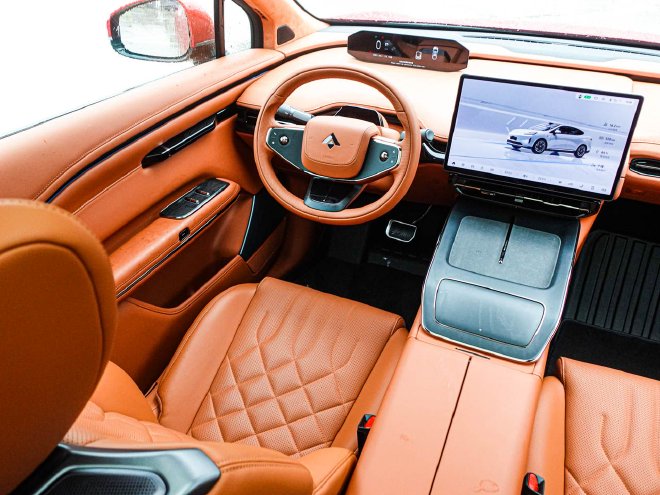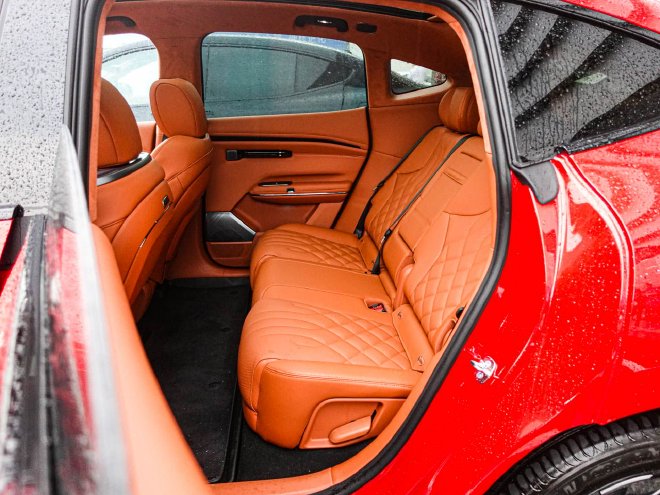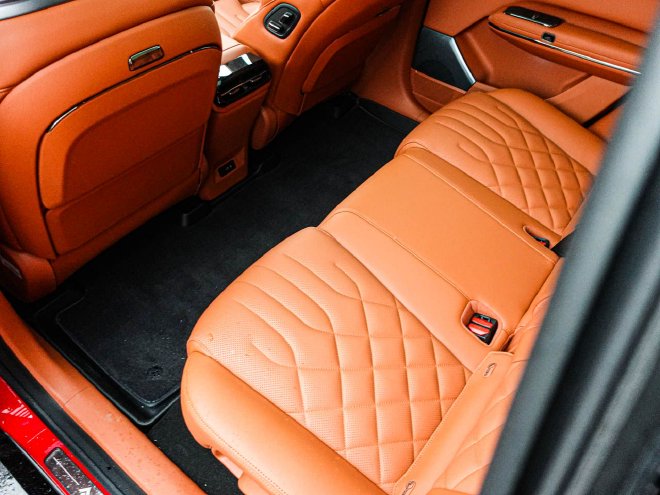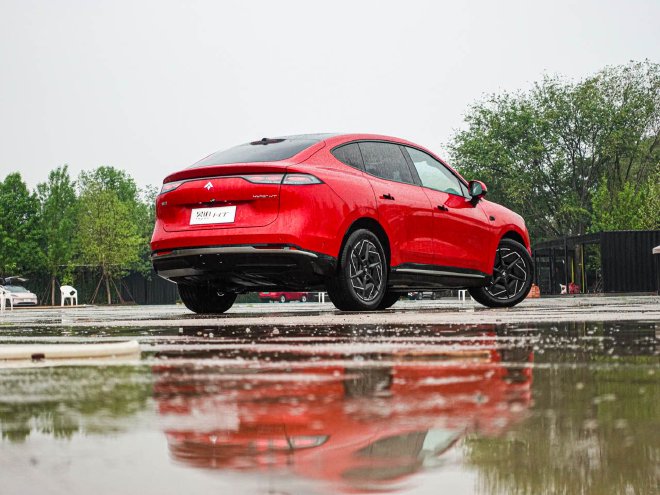Still in the internal testing phase of the Beijing urban stage, Haobo’s NDA function encountered multiple difficult modes during today’s media experience event. Along the nearly 18 km test route, not only faced heavy rain, but also encountered mountain road repairs, traffic jams, narrow roads for passing, mixed lanes, and the biggest nightmare of intelligent driving – roundabouts.
During the approximately 30-minute closed beta test, Haobo NDA’s performance was nearly perfect. If we were to rate it out of 100, we would give Haobo HT’s NDA test an 85. Where can we improve to get the remaining 15 points?
First, on the hardware side, the 2024 Haobo HT is equipped with a new generation of solid-state variable focus lidar, paired with the Orin-x chip with a computing power of up to 254 TOPS, with a total of 5 millimeter wave radars, including two newly added forward millimeter wave radars. The hardware combines the complementary lidar and millimeter wave radar, not only having the detection performance of close-range blind spots, but also having strong penetration capability for long-distance detection. It can maintain good auxiliary driving capability at high speeds, and has stronger perception capability in congested road sections and merging scenarios.
In terms of software, the 2024 Haobo HT is equipped with the ADiGO PILOT intelligent driving system, which can achieve full scene coverage of high-speed and urban NDA, and can also drive on unplanned roads such as national highways and rural roads with high-precision maps. Haobo HT has developed an end-to-end model for intersections, using AI-driven advanced software algorithms to optimize the end-to-end model based on BEV+Transformer+occupancy network architecture, and has been trained on tens of thousands of intersections to navigate the most suitable route even in complex and unfamiliar intersection environments. Mountain road stage—intelligent driving can make quick decisions This time, the route chosen for the event is more complex compared to the routes chosen by other competitors, eliminating simple high-speed intelligent driving scenarios and directly including mountainous areas, national highways, mixed roads, and roundabouts. These are the road conditions that many people have to drive through every day. In nearly 6 kilometers of mountain roads, the Haobo HT, after fully activating the NDA function, not only stays centered in straight sections but also stays centered in curved sections.
NDA sets speed limit at 40km/h, which is safest for mountain roads. We can see from this photo that Weihu Mountain Road only has two lanes and narrow lanes with guardrails on the right side. Lane recognition for vehicles is crucial. The only advantage of road conditions is the lack of pedestrians and non-motorized vehicles. It should be relatively easy for AI driving algorithm to make judgments.
Not only Haobo NDA system, but also many competitors in urban LCC function, adopt conservative driving strategies in the face of driverless driving without maps. For impatient drivers, it may be difficult to adapt to all driverless systems on the market.
Of course, smart driving requires a learning process, learning about road conditions and the driving habits of the owner. Haobo HT maintained a relatively safe driving speed on this nearly 6 km mountain road, but every turn, every time following another car, did not exceed our safety bottom line, this is also one of the four perceptions embedded in the AdiGO PILOT smart driving system by Haobo, including psychological safety, as well as safer, smarter, smoother, and more efficient.
So, during the test drive of the 2024 Hao Bo HT, the vehicle will slow down and stop at the stop line when the intersection signal light is about to turn red, just like a skilled driver.
Of course, Haobo HT’s intelligent driving, like an “experienced driver”, will deviate from the normal route to avoid obstacles ahead, as long as it is safe and not crossing the solid yellow line, easily overtaking obstacles with a turn of the wheel, and quickly returning to the proper lane.
This is completely normal “veteran driver” thinking, not like a machine. If you encounter some malicious drivers forcing sharp turns or cutting in, Haobo NDA still performs like a robot, only continuing to follow the car ahead when the vehicles in front completely enter the normal lane and route.
However, this is just one of the simplest tests for Haobo NDA. Suddenly heavy rain and road maintenance on nearly half of the road ahead pose the biggest challenge for Haobo NDA in the mountains. Two trucks completely blocked the road ahead, with many construction workers on both sides of the road. But Haobo HT, after just a few seconds of judgment, took the initiative to turn the steering wheel and enter the opposite lane to avoid them.
At this time, the rain is gradually getting heavier. Rainy days can affect smart driving. The rain curtain formed by heavy rain can cause errors in telemetry distance. However, the Haobo HT still naturally returns to the lane and drives normally.
Haobo HT brings a driving experience in mountainous areas that exceeds expectations. The decision-making is decisive and suitable for normal drivers, similar to the safe mountain driving experience of a “veteran driver.” Haobo NDA is expected to improve judgment speed and decision-making time after full release. In terms of performance in intelligent driving on the road, there is a need for improvement in vehicle speed. In other aspects, it completely meets the level of a “veteran driver” with ten years of accident-free experience. In the non-mixed phase, intelligent driving can preemptively avoid crises. When driving on non-closed city roads, the main challenge is non-mixed road driving, facing multiple lanes changing, traffic lights, pedestrian crossings, and unpredictable behaviors of express delivery, logistics, and other traffic participants. Haobo NDA is generally satisfied with this scenario, especially in heavy rain. It can anticipate pedestrians crossing the road in the opposite lane and slow down and stop about 10 meters in advance. It is surprising that NDA can make such operations difficult to see clearly in the opposite lane in heavy rain.
In terms of active merging, the Haobo HT is very clever on non-motorway roads. When the vehicle turns right according to the navigation, and enters the middle lane, if the left lane is very empty due to congestion ahead, the Haobo NDA will decisively merge to the far left lane after driving straight for 10 meters after the right turn, seamlessly and smoothly, showing a kind of boldness of a “veteran driver” in judging how to proceed smoothly.
When encountering oncoming vehicles blocking the intersection, the Haobo HT does not wait for the vehicle to pass before continuing. Instead, it quickly maneuvers to the left to avoid the vehicle without slowing down, then swiftly returns to the lane. This maneuver is quite aggressive. When driving, people may not choose to do the same. Safety is important, and avoiding potential secondary congestion at the intersection is also a consideration. In the next OTA update, this operation should be adjusted to ensure a safer and more orderly passage through the intersection.
When the rain became heavier, the Haobo NDA made some mistakes in lane recognition. Approaching the intersection, the lanes increased and the system identified two lanes. The vehicle made random decisions, turning right and then left, returning to the original lane. In fact, without rain, the Haobo NDA’s judgment would not have been wrong. The pouring rain not only caused lane misjudgment, but also made it difficult for human eyes to see the lane divider. This was the first time manual intervention was carried out to prevent safety hazards.
After that, the Haobo HT entered the nightmare section of all intelligent driving – the roundabout. Initially, there was no problem entering the roundabout, but many parallel vehicles forced their way from different lanes, blocking the normal route of the Haobo HT, causing it to be stuck. In order to avoid more congestion, manual takeover was immediately carried out. This does not mean that the Haobo NDA cannot handle the roundabout, but when other vehicles do not follow the normal path, the judgments and instructions made by the intelligent driving system can only be conservative, stopping and following after parking.
Because this time Haobo’s NDA experience was the Beijing beta version, it was not fully rolled out until July when it will be available in 41 cities, and nationwide road opening will be completed by September. During the trial period, the vehicle’s autonomous driving ability only reached 80% effectiveness. For imageless autonomous driving, Haobo’s NDA performance was excellent, especially in mountainous areas and rainy days, showing flexibility and agility comparable to experienced drivers. However, there is room for improvement, particularly in decision-making at intersections, where lane continuity needs to be maintained. Changes in the 2024 Haobo HT The model of Haobo’s NDA experienced this time was the 2024 Haobo HT, which has undergone changes in exterior, interior, and range. Firstly, there are new exterior colors such as Phantom Blue, Quantum Red, and Champagne Pink. The red color is not frivolous, showing sophistication and reflecting the active and youthful side of this model.
In addition, the high-end model comes with rear gullwing doors that open and close electronically. This is the second all-electric vehicle to feature rear gullwing doors after the Tesla Model X. The doors are equipped with 12 radars to improve detection of obstacles such as low-height parking garages and narrow parking spaces. They can achieve a larger opening angle, reaching a height of 2.3m and a width as small as 34cm when opened.
In terms of interior design, the 2024 Hao Bo HT cabin has added the colors of elegant orange-brown and Bordeaux red, which are very coordinated, enhancing the luxury of the car’s interior with high saturation colors.
The 2024 Haobo HT seats are covered in Nappa leather and filled with dynamic foam technology from private jets for support and comfort.
Of course, the rear seats can achieve a maximum recline angle of 143 degrees, providing a nearly flat sitting position for a more comfortable and cozy journey.
In terms of power, the 2024 Haobo HT series all use rear-wheel drive single motor, with maximum power of 180kW and 250kW, total torque of 355N·m and 430N·m. Equipped with magazine battery 2.0, the range has been increased to 550km, 670km, 825km. In terms of charging, it is also equipped with 800V ultra-high voltage fast charging, achieving a performance of replenishing 425 kilometers in 15 minutes.
